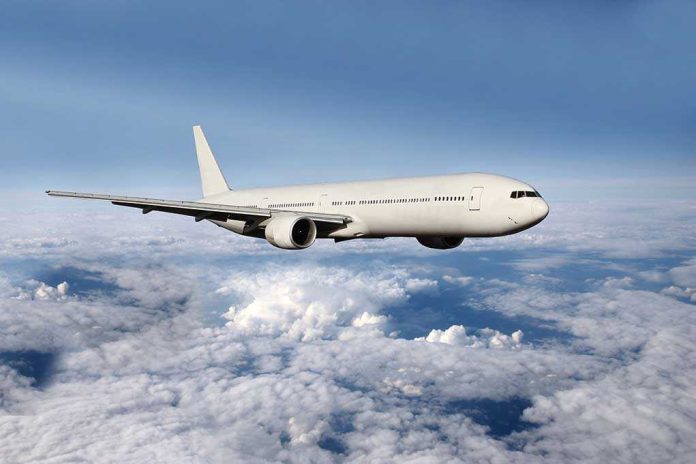
An unexpected collision with a weather balloon raises serious questions about aviation safety and regulatory oversight.
Story Snapshot
- A United Airlines Boeing 737 Max 8 made an emergency landing after hitting a weather balloon.
- The incident injured a pilot but did not compromise cabin pressure.
- Windborne Systems, responsible for the balloon, claims adherence to FAA regulations.
- The NTSB has launched an investigation into the collision.
Unexpected Collision Raises Safety Concerns
The recent emergency landing of a United Airlines Boeing 737 Max 8 in Salt Lake City has sparked concern among aviation experts and passengers alike. The plane, originally en route from Denver to Los Angeles, was forced to divert after colliding with a weather balloon at 36,000 feet. This unusual incident caused significant damage to the cockpit windshield, injuring one of the pilots. Fortunately, there was no loss of cabin pressure, and the plane landed safely with all 134 passengers and six crew members unharmed.
The incident has cast a spotlight on the potential risks posed by weather balloons in high-altitude flights. Weather balloons have been used for decades to collect atmospheric data, yet collisions with aircraft are rare. The increasing deployment of such balloons for data collection has raised questions about their safety and the adequacy of current aviation regulations.
Regulatory Oversight Under Scrutiny
Windborne Systems, the company responsible for the balloon, has acknowledged that one of its devices might have been involved in the collision, despite following FAA guidelines. CEO John Dean expressed concern over the incident and emphasized the company’s compliance with existing regulations. This event has prompted the National Transportation Safety Board (NTSB) to investigate the collision to determine its cause and recommend potential safety improvements.
Officials from the Federal Aviation Administration (FAA) are also involved in ensuring compliance with existing safety regulations. The FAA and NTSB wield significant regulatory authority, and both organizations will play crucial roles in determining the outcome of the investigation and any subsequent regulatory changes.
Potential Implications for Aviation Industry
The short-term implications of this incident are likely to involve increased scrutiny on weather balloon operations and potential immediate safety measures. In the long-term, there could be a comprehensive review of regulations and possibly new safety protocols for weather balloons and their interactions with aircraft. This situation highlights the need for better tracking and avoidance systems to prevent future incidents.
The aviation industry is already feeling the pressure, as this incident could lead to changes in safety procedures and regulations. The public’s perception of aviation safety might also be affected, prompting potential political and legislative actions to address these concerns.
Sources:
United Airlines Emergency Landing Likely Caused by Collision with a Weather Balloon
United Airlines Emergency Landing Likely Caused by Collision with a Weather Balloon
United Airlines Emergency Landing Likely Caused by Collision with Weather Balloon














